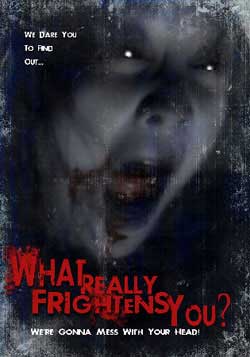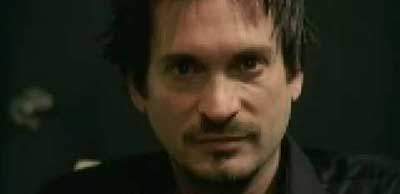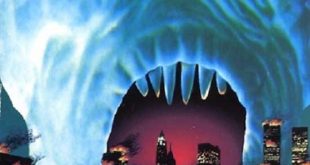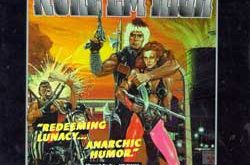 1-How were you first interested in filmmaking?
1-How were you first interested in filmmaking?
In the mid-sixties my parents bought me a Super 8 camera and I began making amateur movies in that format at age ten. Later they purchased me Super 8 sound equipment and I created sound shorts. I rounded up friends to appear in them and
also made animated movies using GI Joes, shooting them a frame at a time to make it appear as if they were fighting. Today young people have access to far more sophisticated digital cameras and can make a feature with it but in my youth all
that was available was Super 8 so that’s how I started.
2- You are most well-known in Spain for ‘Class of Nuke Em High’, but you worked for Troma in other projects. How did you first get involved with Troma? How was back then and is today your relation with Troma and Lloyd Kaufman?
My first job after graduating New York University was working for Charles Kaufman, his brother, on the horror film, “Mother’s Day” (1980). I did the sound editing on that picture and then went to work for his brother, Lloyd, at Troma continuing in that
department on “Waitress!” (1981). Afterwards I became the post-production executive from1981-1986 editing all of their features and making their trailers, radio spots and other promotional material. The most notable movie I edited was their cult film, “The Toxic Avenger” (1985). I left in 1986 to form my own production and marketing company, New Wave Film Distribution, Inc.so my relations with Troma today is as a compeditor. While I was editing at Troma I made two movies. “Splatter University” (1983) was made independently and they distributed it for a few years and then the rights returned to me and I market it now. “Class of Nuke Em’ High” (1986) was made as a ‘work for hire’ and I didn’t have creative control over it. One of the reasons I left to form my own company was to retain complete creative control over my productions which I have had from “Space Avenger” (1989) through my latest release, “What Really Frightens You” (2010).
3- What are the main aspects a young filmmaker has to keep in mind to develop a movie?
If a filmmaker is operating as an independent and producing his own films they have to develop the script with the budget in mind. It would be pointless to create a screenplay that required extensive location shooting in another country if that
wasn’t affortable for instance. Before I write a script I research what locations are available within my budgetary limitations and then incorporate them into the narrative. For example, in “What Really Frightens You”, I wanted the climax to take place in a Gothic castle setting. First I found one for rent and then included it into the screenplay.
4- How do you get the necessary money to begin producing a movie?
I use my own money to finance up to 51 % of the budget and then get small investors for the rest. That way I retain control over the production.
5- Being an independent filmmaker with a self-run company, what are the main problems you confront every time you develop a new project?
The main problem is keeping up with market trends and technology. I’ve been producing movies since 1986 and much has changed over the years. Many of the small independent cinemas folded and were replaced by megaplexes. It’s difficult for an indie to get a booking in them since they are dominated by the majors. So I have to constantly seek out surviving
indie cinemas throughout the country. Of course the ancillary markets keep changing too. We’ve gone from VHS to laserdisc to DVD over the past twenty five years, all requiring different marketing strategies and video masters. 3-D DVD is a new emerging market. My feature, “Run for Cover” (1995), was shot in that format so once it’s established I can sell it in that system. I have to keep on top of the new delivery systems and how to market my backlog in them. The major change since the eighties is that theatrical exhibition is no longer the major source of income. It’s just one of the many formats consumers will see the movie in.
6- You also have got published works as illustrator and writer. What can you tell us about this creative process?
After I finished “Space Avenger” in 1989, I contacted the Beijing Lab in China to make three strip dye transfer prints for theatrical release. They were the last place that still used the famous ‘Glorious Technicolor’ process. I ended up accumulating so much technical data about it I incorporated it into a couple of articles I wrote for “The Perfect Vision” magazine.
Then I expanded the articles into the book, “Technicolor Movies” (1993), which was published by McFarland and Company, Inc. I followed that book with a chronicle of exhibition titled, “The Moviegoing Experience 1968-2001” (2003), also published by them. Both were well received and covered aspects of film history that hadn’t been expored in great detail by other historians. My father wrote the verse for a Children’s book titled, “Animal Kingdumb” and I did the illustrations
for it in 2002. I’m a cartoonist as well as a filmmaker which helps when I design the storyboards for
my features.
7- Film preservation is another aspect you are very dedicated to. What’s the importance to do it and how do you do that?
Archivist, Robert A. Harris, was one of the producers of my movie, “Space Avenger”. He was restoring “Lawrence of Arabia” simultaneously. When I discovered that famous classics had not been properly stored. I was determined to control and preserve my own negatives. I built my own temperature and humidity controlled vault for my movies. It’s actual rather simple to preserve contemporary movies. The negative stock is low fade and all you have to do is handle it carefully and keep it in the suggested environmental standards. Older movies are a major problem. Pre-1950 films were shot on the volatile nitrate stock which has to be transferred to modern saftey film before it decomposes. Tri-acetate color film before 1983 was subject to fading and there are various techniques to restore the lost dyes. The other problem with older negatives is they tend to be very worn. There are digital programs that can remove scratches, damaged frames and dust. Since I preserved my features from the beginning they are all in good condition and don’t require restoration.
8- What’s the process you follow when writing a screenplay?
First I come up with the ‘high concept’. Then I develop key sequences be they action, comedy or horror. Then I space them out throughout the running time and work in characters and dialogue. For example, in my latest movie “What Really Frightens You”, I started with the following premise: A writer for a horror magazine asks people the title question. After publication their primal fears come true. Then I had to decide what each fear was and how to depict it on screen. Finally I created characters with backgrounds that suited their fears.
9- How’s a normal day in the life of Richard W. Haines?
Filmmakers don’t live normal lives. It’s not a 9 to 5 job. Like all indies I spend all my time hustling and promoting my films to film festivals, agents, buyers, theaters, distributors and customers. Right now I’m using on line websites to promote the upmcoming release of “What Really Frightens You”.
10- What are your suggestions to filmmakers on having their movies shown on TV and/or distributed?
Any tips for negotiating?
If possible keep the contract short term with some financial goals that have to be met to extend the
agreement.
11- What can you tell us about your new movie, ‘What Really Frightens You’?
As mentioned above, it’s a psychological horror movie that is character driven but has some outrageous special effects. It’s a picture that will ‘mess with your head’ as the tag line indicates. We shot the movie in 35mm rather than in a digital format and the cinematography is very inventive as is the sound mix. For conventional scenes we used normal color and the front speakers. For the horror scenes we distorted the color and expanded the sound field to the rear speakers. So audiences have a visual and audio cue that something frightening is going to happen.
12- How’s your relation with today’s cinema world inside and outside the underground?
I write, produce, direct and market my own movies so I don’t really have any relations with other filmmakers since my company is self contained. I strongly advise young filmmakers to shoot in 35mm if possible. Video formats are like a moving target and none of them last long. It’s not advisable to have your master material in a system that will eventually become obsolete. 35mm negative can be adapted to any new system that is developed into the future. It also gives a more reliable ‘hard copy’ for archival storage than digital data which can degrade over time. If you shoot digitally make sure you output a 35mm negative of the completed movie for the long run.
13- What’s your next project?
I have a sequel prepared titled, “What Really Frightens You II” which is in pre-production. Like all my movies we’ll shoot it in 35mm.
14- Anything you want to say to our readers?
I dare them to find out “What Really Frightens You?” which is being released on October 19, 2010 by Celebrity Video Distribution.
Interview provided by New Wave Films PR
 Horror News | HNN Official Site | Horror Movies,Trailers, Reviews
Horror News | HNN Official Site | Horror Movies,Trailers, Reviews



